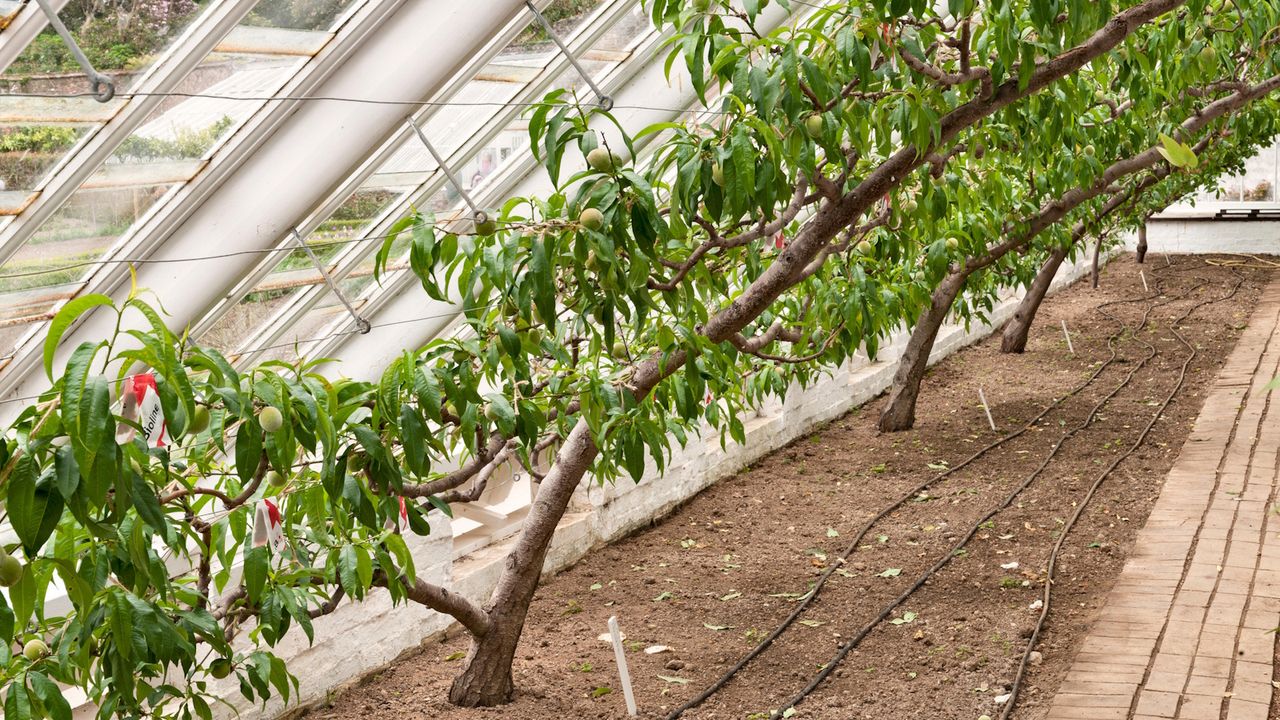UPDATE: A remarkable Victorian gardening technique is transforming peach harvests in colder, wetter climates, allowing home gardeners to achieve bumper yields. This time-tested method, used at Gravetye Manor in Sussex, England, is proving crucial for overcoming challenges like peach leaf curl and frost damage.
The innovative method involves growing peach trees in a Victorian glasshouse, a practice dating back to 1884 when renowned horticulturist William Robinson first acquired the estate. Head Gardener Tom Coward shared insights during a recent visit to the property, emphasizing the significance of this traditional approach.
“We plant peach trees out of tradition,” Coward stated. “William planted peaches, and it nods to Victorian growing by using the glasshouses.” The glasshouse protects peach trees from moisture-related diseases like peach leaf curl, ensuring high-quality fruit production.
As extreme weather patterns continue to challenge agriculture, this technique offers hope for gardeners in regions prone to excess rainfall. Peach leaf curl thrives in damp environments, weakening trees and stifling fruit yields. In the United States, peach trees are ideally suited to hardiness zones 6 to 8, but the risk of disease limits their success.
At Gravetye, four varieties of peach trees, including ‘Amsden June’ and ‘Red Haven’, thrive under glass. “By putting them under glass, you don’t get peach leaf curl. You get high-quality fruit early in the season,” Coward explained, highlighting that blossoms remain protected from frost, which can devastate potential harvests.
The glasshouse, restored to its former glory in 2012, showcases the horticultural innovations of the Victorian era. Advances in glass production and ventilation techniques allowed for better cultivation of exotic plants, making the tradition of glasshouse gardening flourish.
For those looking to replicate this success at home, Coward offers practical advice. While a full-sized glasshouse may be a considerable investment, compact peach trees can thrive in smaller greenhouses or pots. Key tips include using well-draining soil, proper ventilation, and regular pruning for optimal fruiting conditions.
As the summer harvest season approaches, gardeners are eager to see the fruits of their labor. Look for ripe peaches when they turn yellow, yield slightly to pressure, and emit a sweet aroma. Coward notes that growing peaches under cover often leads to earlier harvests, allowing peach lovers to enjoy fresh fruit sooner.
This Victorian gardening hack is not just a nostalgic nod to history; it is a vital strategy for modern home gardeners facing unpredictable weather. With the right techniques, anyone can cultivate their own peaches, making the dream of homegrown fruit a delicious reality.
As the gardening community embraces this innovative approach, expect a surge in interest and success stories from those who dare to grow peaches in challenging climates. Stay tuned for more updates and tips on thriving peach cultivation!
